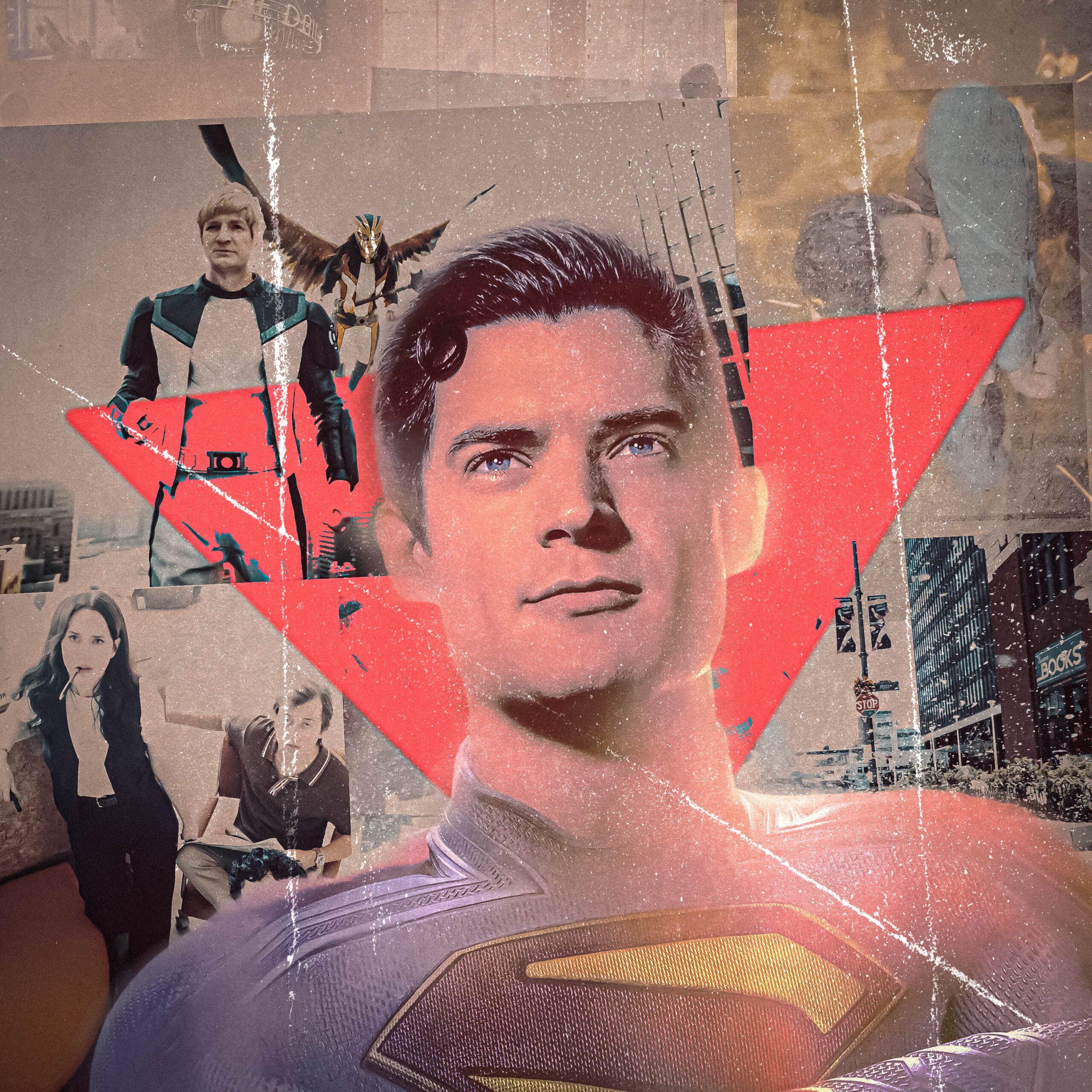

Though James Gunn quietly opened the new DC Universe with the animated series Creature Commandos last December, the fledgling cinematic franchise took off in earnest when Superman arrived in theaters last week.
A little more than 10 years after Zack Snyder’s Man of Steel kicked off DC’s first attempt at a rival to the MCU, the DC Extended Universe, Gunn has turned to the company’s foundational superhero to lead DC into another new era—one that the DC Studios executive surely hopes will be more fruitful than its predecessor. And so far, the outlook is promising. Superman, written and directed by Gunn himself, had a solid debut, with an estimated global box office opening of $217 million, an A-minus CinemaScore, and mostly positive press, as reflected by an 83 percent critics rating on Rotten Tomatoes on more than 350 reviews. Those figures might not be spectacular, but they’re far from a disappointment. And that’s all that DC Studios really needed.
Superman is an entertaining start to the DCU, and a significant improvement on the vast majority of blockbusters that DC Films produced during the ill-fated run of the DCEU. That may be a very low bar to clear, but it’s a crucial first step for DC Studios. The film boasts an excellent leading trio in David Corenswet as Superman, Rachel Brosnahan as Lois Lane, and Nicholas Hoult as the villainous Lex Luthor; each actor perfectly encapsulates their iconic characters while still making them their own. And above all else, Superman is simply a fun superhero movie that provides the kind of sincere, hopeful message that the Man of Steel has always been built on. It captures the fantastic spirit of the comic books and showcases the DCU’s potential.
That said, Superman is far from perfect. The film struggles to balance its self-contained narrative with its need to establish the wider DCU, as an influx of complementary superheroes jockey for screen time with Superman and his friends and family. The story overextends itself with too many moving parts: the introductions of all of these characters, a geopolitical conflict that reflects real-world issues in simplistic terms, the existence of pocket dimensions, and an exploration of what it means to be human. Superman hits the ground running and hardly ever slows down long enough to let its strengths breathe.
The DCEU’s demise placed significant pressure on Superman to win back audiences who might be skeptical of the DC brand, and to lay a foundation for the DCU. Even with the film’s flaws, Gunn’s latest superhero project should be considered a success in those regards. Because this movie is much more than Corenswet’s introduction as the new Man of Steel; it’s a promising beginning to DC Studios’ sprawling 10-year plan.
After Superman’s long-awaited return to theaters, here are my main takeaways about how the film affects the DCU’s direction.
A New Superman … and Supergirl
At the start of Superman, text explains that Kal-El landed on Earth 30 years ago and announced himself to the world as Superman three years ago. That allows Gunn to skip the widely known origin story of the 87-year-old character. This is probably the right narrative decision, even if it means sacrificing some of this particular Superman’s development.
Superman excels at demonstrating the Man of Steel’s unwavering commitment to protecting every living being—from humans to squirrels. That devotion to preserving all life is Superman’s greatest strength, and also his fatal flaw, as it sometimes leads him to lose sight of the bigger picture. This is one of the most compelling themes that the film explores: Superman jeopardizes the safety of Metropolis so he can safely decommission a monstrous kaiju, and he prevents Boravia’s invasion of Jarhanpur, which raises intriguing ethical questions about superhero interventionism. The fact that Superman has constructed his life around protecting others makes it all the more jarring when Luthor unearths the damaged portion of a once-cherished message that Kal-El’s Kryptonian parents left him, revealing their desire for him to use his heightened abilities to rule over the planet and repopulate the Kryptonian race by any means necessary.
It’s a shame, then, that this core tension gets a little lost in the overall clutter of the movie, with Superman’s evolution ultimately deprioritized in his own story. There’s one powerful scene between Clark and Jonathan Kent (Pruitt Taylor Vince) in which Clark’s adoptive father tells his son that he doesn’t have to become the man that his biological parents wanted him to be. However, this moment is the one significant on-screen interaction that Clark has with either Pa or Martha Kent (Neva Howell). By the end of Superman, Clark no longer listens to that formative message from Krypton as a means of soothing himself. He embraces his humanity over his Kryptonian heritage and opts to look at images of his adoptive parents from Smallville instead. Clark seems to be trying to forget about Jor-El and Lara altogether, but the film sidesteps a more pronounced and meaningful resolution to its massive change to the Superman lore.
It’s an admirably bold choice by Gunn to alter the traditionally noble intentions that Kal-El’s parents have had for sending the last son of Krypton to Earth. But the underdevelopment of that crucial plot point—a foundational element of the character—is a symptom of the filmmaker’s tendency to stuff his movies with too many ideas.
For better or for worse, Superman is just an introduction to the Man of Steel and the wider DCU, so the window to assess the implications of Jor-El’s Viltrumite motivations is far from closed. And the story of Krypton—if not Kal-El’s parents—will be explored through the lens of another superhero who’s introduced in the final moments of the film: Supergirl (Milly Alcock).
Alcock’s debut functions like a customary big-screen stinger, even more so than the pair of scenes that appear during and after the credits. Kal-El’s cousin crashes into the Fortress of Solitude as she returns from an apparent off-world bender, and Superman tells one of his automatons that she likes to party on planets with red suns so she can feel the effects of alcohol. (Kryptonians can’t get drunk on Earth due to the immense power that they draw from the planet’s yellow sun.) Kara is there to pick up her dog, Krypto—and that he’s her dog explains the super canine’s unruly behavior, as it never made much sense that the ever-responsible Clark would’ve done such a pitiful job training him.
Although Kara’s appearance is brief, the scene quickly establishes the stark difference between the two Kryptonians, and the interplanetary interests that Supergirl is set to explore. The upcoming movie, directed by Craig Gillespie (I, Tonya) and written by Ana Nogueira, is slated for release on June 26, 2026. Supergirl is based on the critically acclaimed comic book miniseries written by Tom King, Supergirl: Woman of Tomorrow. Here’s the premise of the film, according to a report from Variety in early 2024: “In the new iteration, Supergirl travels across the galaxy to celebrate her 21st birthday with Krypto the Superdog. Along the way, she meets a young woman named Ruthye and winds up on a murderous quest for revenge.”
By introducing Kara and Krypto in Superman, Gunn has already laid some of the groundwork for next summer’s blockbuster as the DCU pushes forward.
The Justice Gang and a Universe of Metahumans
Along with all the information about Superman’s origins, the opening text of the film also reveals a crucial bit of world-building: The first metahumans were discovered on Earth 300 years ago.
That’s a pretty massive revelation that raises all sorts of questions about the ripple effects metahumans have had on human civilization over three centuries. In the present-day context of Superman, Luthor uses his own metahumans to lead Planet Watch, a task force that Luthor controls, which he offers to the American government as a response to Superman. And then there’s also the so-called Justice Gang, a trio of superheroes—Green Lantern/Guy Gardner (Nathan Fillion), Hawkgirl (Isabela Merced), and Mister Terrific (Edi Gathegi)—that often teams up with Superman, even though their morals are more questionable than those of the Big Blue Boy Scout.
While Gardner and Hawkgirl play bit parts in Superman, Mister Terrific has a substantial role in the film as he teams up with Lois to try to save Superman after he’s taken to Luthor’s pocket dimension. It’s there that the Man of Steel also meets Metamorpho (Anthony Carrigan), another metahuman who’s being held captive (along with his son) by Luthor. Metamorpho has the ability to transmute his body into other elements, including kryptonite, which Luthor takes full advantage of. Whether with The Guardians of the Galaxy franchise or The Suicide Squad, Gunn has always loved to take lesser-known and/or oddball characters and put them in the spotlight. In Superman, the filmmaker chooses Metamorpho and Mister Terrific to satisfy that itch, and as a result, these two superheroes account for some of the movie’s standout moments.
What with Superman, the Justice Gang (which includes Metamorpho by the end of the film), Planet Watch, Luthor, the Daily Planet staff, both sets of Clark’s parents, and Krypto, there isn’t nearly enough screen time for every character to play a meaningful or satisfying role across the 129-minute film. Even still, many of them get at least one moment to shine, or otherwise leave the viewer wanting to see more of them. Although this large cast comes at a cost to Superman’s story (and the portrayal of Superman himself), the boundless imagination—and absurd wealth of characters—provided by the back catalog of DC Comics is on full display.
Superman neatly wraps up its story with Clark and Mister Terrific preventing Metropolis from collapsing into a black hole, Luthor being sent to Belle Reve for his crimes, and the Justice Gang being celebrated for their heroism after protecting Jarhanpur from Boravia during another attempted invasion. But the end of the film also sets up the DCU’s future, particularly where metahumans are concerned. In a conversation between the secretary of defense, General Mori (James Hiroyuki Liao), and General Rick Flag Sr. (Frank Grillo), Mori warns Flag that the metahumans are the ones making the rules now. Although Gardner claimed to have no interest in interfering with global politics earlier in the movie, he and his team end up doing exactly what Superman did, and even going one drastic step further in killing the Boravian president. And the Justice Gang does all of this without consulting the American government, which had previously allied with Boravia.
With Superman regaining the favor of the public, and Metamorpho joining a revamped Justice Gang that’s now unafraid to impose their will, regardless of any legal constraints, the metahumans’ influence is rapidly growing—and even humans with less severe grudges than Luthor are concerned. Flag, the father of Colonel Rick Flag Jr. from Gunn’s The Suicide Squad, is limited to a small role in Superman, but Grillo reprises his character from Creature Commandos. While that connection doesn’t amount to much within the scope of this film, Flag is also set to return in the second season of Peacemaker, which will likely continue to pull on this narrative thread as a conflict emerges between humans and metahumans in the DCU.
The New DCU
Superman is a wildly different take on the eponymous storied superhero than Man of Steel. Part of that disparity stems from the filmmaking sensibilities of the respective directors: Snyder favors a darker, grittier tone, while Gunn leans into a brighter, more earnest interpretation of the character (with a heavy dose of humor and needle drops). The malleability of Superman himself is responsible for some of the divide, too. But the most substantial reason for the new movie’s departure from its predecessor’s tone is that this time, DC Studios has a larger plan that doesn’t hinge on catching up to Marvel Studios as quickly as possible.
Superman might be weighed down by its obligations to the DCU in a way that Man of Steel wasn’t, but it’s easy to see how future DCU projects might benefit from the work that Superman has already put in. The second season of Peacemaker is coming next month, and teasers have already shown that Hawkgirl, Guy Gardner, and Maxwell Lord (Sean Gunn)—the last of whom appears in a very brief cameo in the film—will return in some capacity. (It’s possible that their roles will be as small as Peacemaker’s was in Superman; John Cena briefly reprised the role for a gag as a guest on a talk show.) And the aforementioned Flag is expected to play a more substantial part, now that the general has been named as the new director of government agency A.R.G.U.S. following Amanda Waller’s dismissal in Season 1, as Peacemaker builds on a plot point from The Suicide Squad that featured Christopher Smith killing Flag’s son.
Additionally, the upcoming HBO Max series Lanterns will piggyback on Gardner’s debut and likely provide a more meaningful (and serious) introduction to the Green Lantern Corps, more than 14 years after the disastrous Green Lantern film that starred Ryan Reynolds. The TV show will be the first taste of a DCU project that doesn’t have Gunn’s creative imprint all over it; showrunner Chris Mundy (Ozark, True Detective) will lead the eight-episode season that will premiere in early 2026. The series will introduce Green Lanterns Hal Jordan (Kyle Chandler) and John Stewart (Aaron Pierre), and will feature a returning Gardner, who’ll apparently be “a little bit higher strung” in an undoubtedly different narrative environment.
With Lanterns, Supergirl, and the Mike Flanagan–penned Clayface film set to follow the Gunn trio of Creature Commandos, Superman, and Peacemaker, we’ll see next year how well these disparate DCU projects will fit together. More than that, we’ll find out whether Gunn and DC Studios co-head Peter Safran will afford other filmmakers the creative freedom they promised they would upon the formation of DC Studios.
For now, DC Studios can enjoy the fresh start that Superman has helped deliver. Although David Zaslav’s recent history doesn’t inspire much confidence when it comes to brand stability, the Warner Bros. Discovery CEO proudly voiced his support of Gunn and the new direction of the studio to the media at the conclusion of this crucial opening weekend. “Superman is just the first step,” Zaslav said, adding, “The DC vision is clear, the momentum is real, and I couldn’t be more excited for what’s ahead.”



